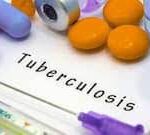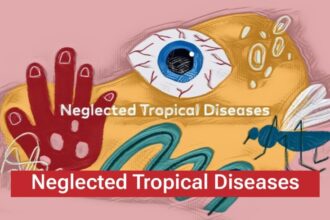Neglected Tropical Diseases (NTDs) are a group of 20 debilitating infectious diseases that affect over a billion of the world’s poorest and most marginalized people, primarily in tropical and subtropical regions. Despite their immense global health burden, NTDs often remain in the shadows, receiving far less attention and funding than diseases like HIV/AIDS, tuberculosis, or malaria. This neglect perpetuates a cycle of poverty and suffering, hindering socioeconomic development and trapping affected communities in a state of vulnerability. Addressing NTDs requires urgent and sustained global attention, not only as a matter of public health but also as a fundamental issue of equity and human rights.
The impact of NTDs is far-reaching and devastating. These diseases cause chronic disability, disfigurement, blindness, malnutrition, and even death. They impair physical and cognitive development in children, leading to reduced educational attainment and future economic opportunities. For adults, NTDs can result in decreased productivity, loss of income, and increased stigma and social exclusion. The collective burden of NTDs on individuals, families, and communities is immense, contributing to a vicious cycle of poverty and underdevelopment.
Among the most prevalent NTDs are soil-transmitted helminth infections (ascariasis, hookworm infection, and trichuriasis), which affect hundreds of millions of children and adults, leading to anemia, malnutrition, and impaired cognitive development. Lymphatic filariasis (elephantiasis) and onchocerciasis (river blindness) cause severe disfigurement and disability, leading to social stigma and economic hardship. Trachoma remains a leading cause of preventable blindness, particularly in resource-poor settings. Other significant NTDs include schistosomiasis (bilharzia), dengue, chikungunya, leishmaniasis, leprosy, and rabies.
The reasons for the neglect of NTDs are complex and multifaceted. These diseases primarily affect the poorest and most marginalized populations, who often lack political voice and are geographically isolated. As a result, NTDs may not be seen as a priority by national governments or international donors. Furthermore, the chronic and often slowly progressive nature of many NTDs can make their impact less immediately visible than that of acute infectious diseases. The lack of robust surveillance systems and comprehensive data on the prevalence and burden of NTDs in many endemic countries also contributes to their neglect.
However, the tide is beginning to turn. Increased advocacy efforts by affected communities, civil society organizations, and global health advocates have brought greater attention to the plight of individuals suffering from NTDs. The World Health Organization (WHO) has played a crucial role in setting targets for NTD control and elimination through its ambitious 2021-2030 roadmap. This roadmap provides a framework for coordinated action across sectors and stakeholders, aiming to prevent, control, or eliminate 20 NTDs by the end of the decade.
Significant progress has been made in recent years in the fight against NTDs. Innovative strategies, such as mass drug administration (MDA), vector control, improved sanitation and hygiene, and disease management, have proven effective in reducing the burden of several NTDs. For example, the number of people requiring treatment for lymphatic filariasis has significantly decreased, and several countries have been validated as having eliminated trachoma as a public health problem.
However, significant challenges remain. Reaching the ambitious targets set by the WHO requires sustained political commitment, increased financial resources, and strengthened partnerships. Integrating NTD programs into national health systems and ensuring their long-term sustainability are crucial. Furthermore, addressing the social and environmental determinants of NTDs, such as poverty, lack of access to clean water and sanitation, and climate change, is essential for achieving lasting impact.
The global community has a moral and ethical imperative to address the persistent shadow of NTDs. Investing in their control and elimination is not only a cost-effective way to improve the health and well-being of billions of people but also a crucial step towards achieving health equity and sustainable development. By working together, we can bring these neglected diseases out of the shadows and create a healthier and more just world for all.













